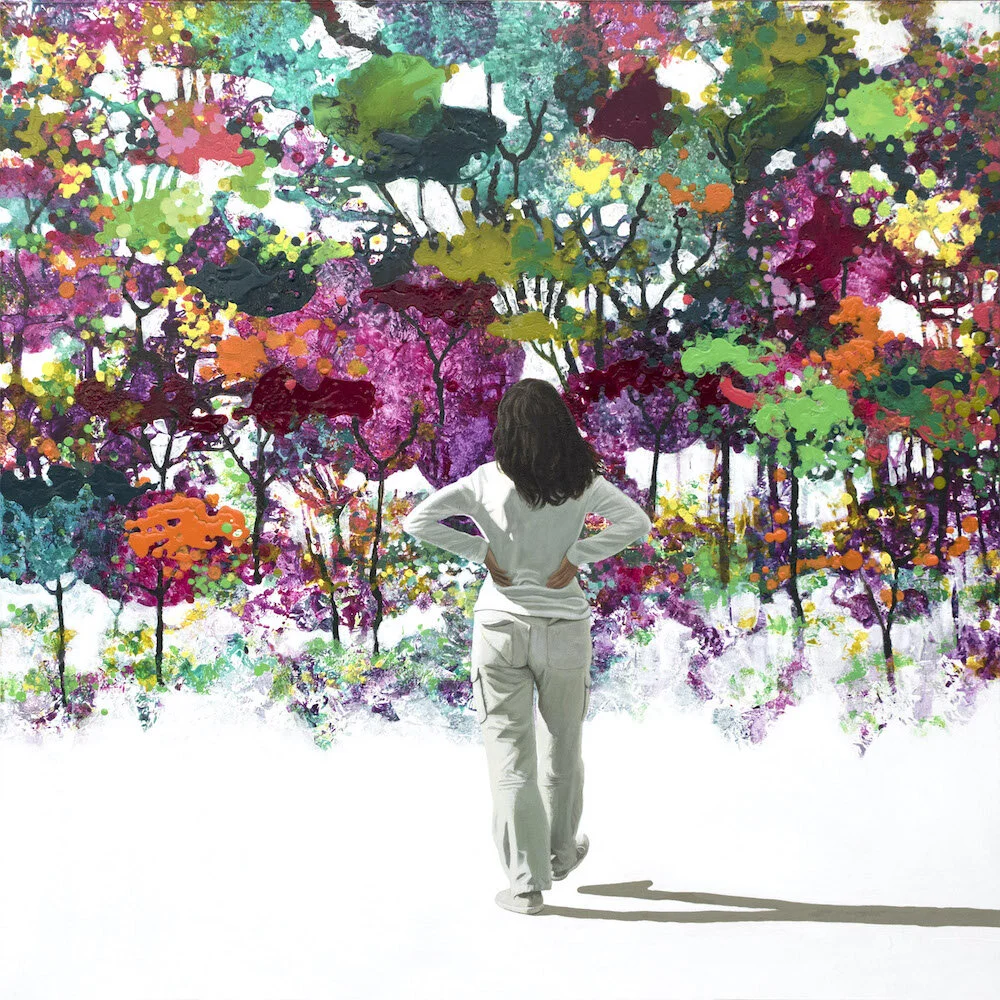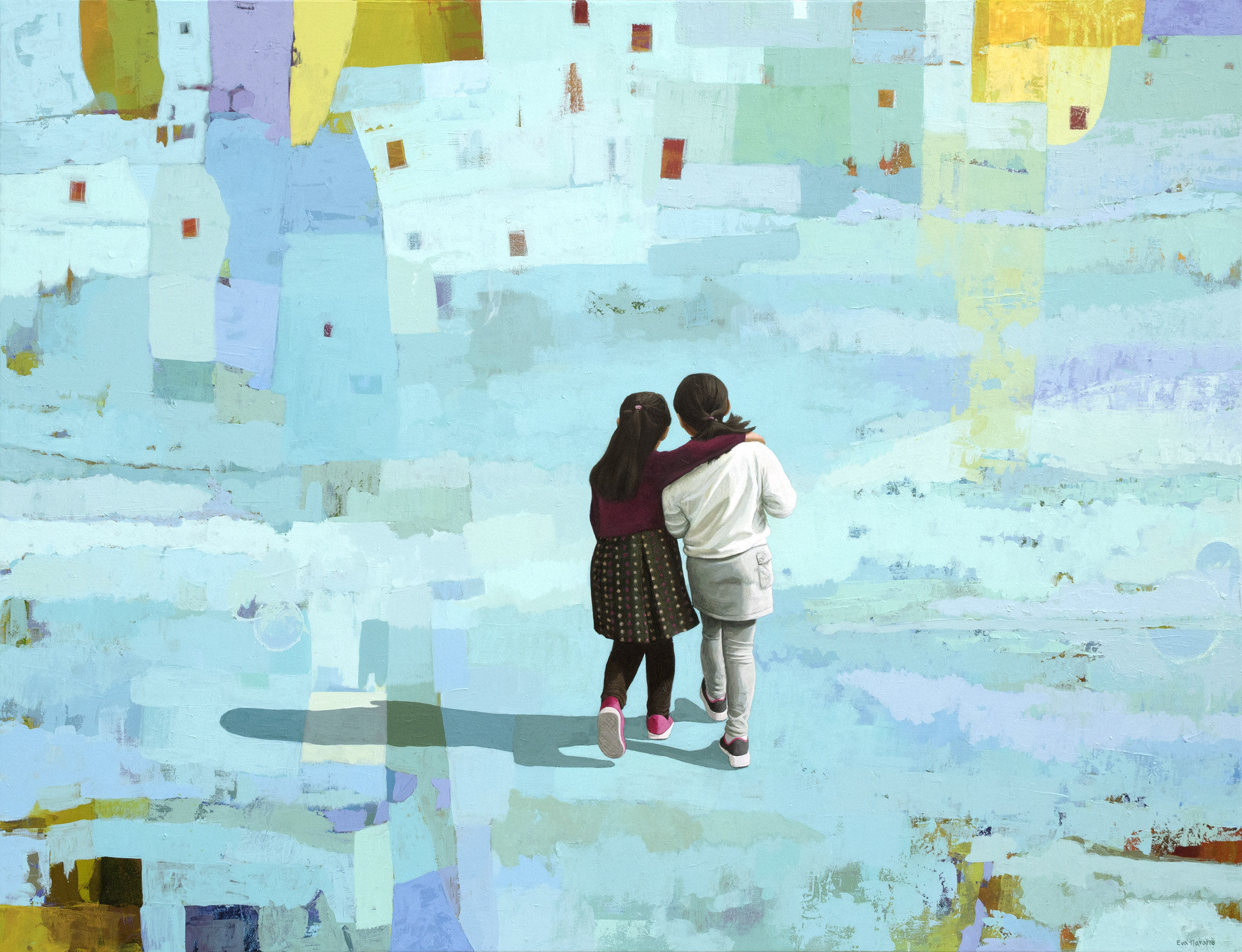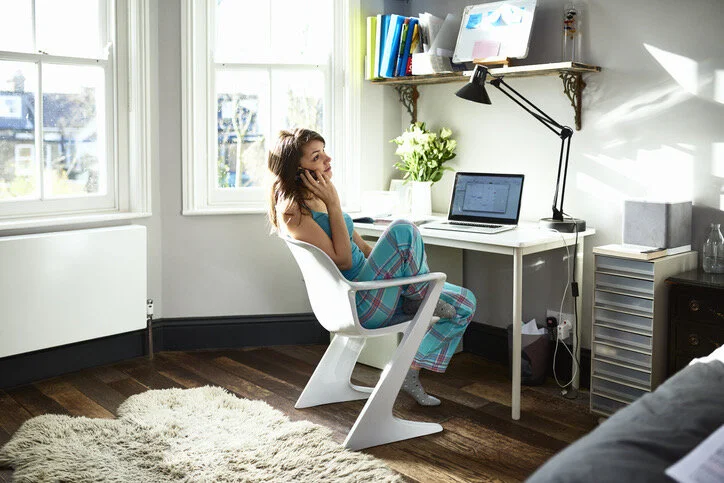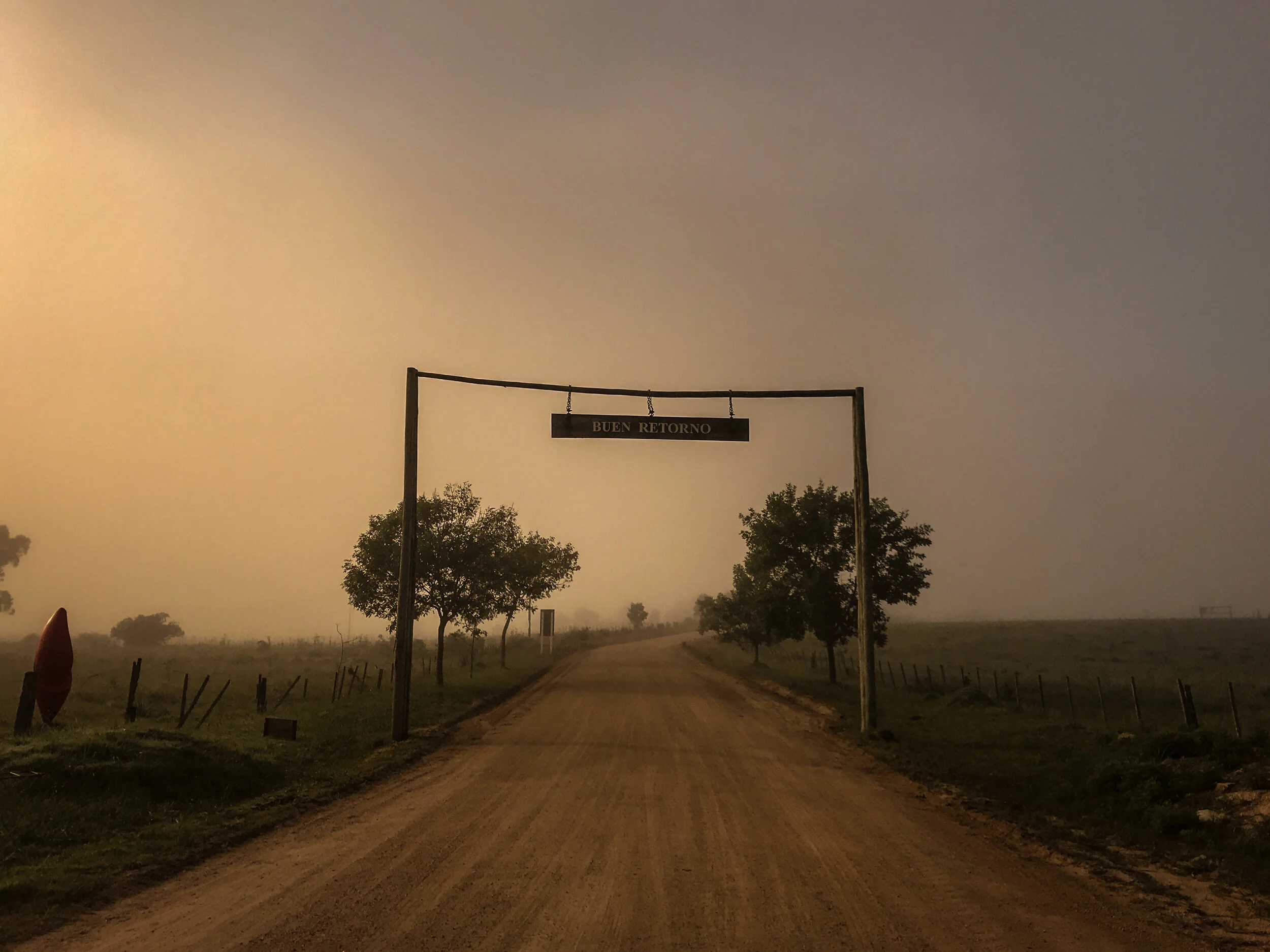The Universality of Sunlight: Eva Navarro's Paintings of Hope
I am looking for light. I am looking for hope. It’s that desperate longing that intensifies when unimaginable, catastrophic events occur, like a racist mob storming the U.S. Capital unchallenged or COVID’s death toll surpassing 4,000 Americans in one day.
I know that when words don’t cut it, art does, and my search leads me to the bright, optimistic paintings of Eva Navarro, a Spanish painter whose assured, unapologetic use of color first catches my attention when I’m combing the SoWa galleries for something to save me. Soprafina Gallery is showing Navarro’s work along with the abstract paintings of Rose Umerlik through January 30.
Step by Step, 2010. 31.5” x 31.5”
Navarro’s paintings immediately captivate me. Once the welcome shock of the color fades, her urbane intricacies come into focus and I’m absorbed by the stark contrast between her abstract backgrounds and hyper-realistic figures. I see that the figures all look away from the viewer. They are anonymous and almost all moving with a forward momentum. Her work has a tension that holds in its balance the optimism of the colors, so bright the Soprafina Gallery looks like a box of crayons from the outside when I visit, and the isolation of the characters moving through their abstract worlds as if in a mindscape of emotion we co-create with them while we gaze.
Welcome, 2017. 38” x 64”. Acrylic on canvas
When I reach Navarro by Zoom at her home studio in Madrid, I have become further interested in the insistence with which she maintains a positive thematic approach in her work. I can’t wait to ask about how she has managed to do that during the pandemic and what effect isolation and stay at home orders have had on her work when she is used to traveling constantly.
After finding the optimism in her work online, I am not at all surprised that talking with Navarro is like talking with an old friend. She is open and eloquent about her history. She grew up in Madrid and began drawing and painting at a young age. Birthday gifts were always art supplies, she said. “My plastic arts teacher was the only one who always gave me 10’s,” (the equivalent of A+ in the U.S.).
Her father, an architect, encouraged her, understanding there was no other path for her than to be an artist. But her mother was more practical and pushed her to get a “real job.” (I’m intrigued later to hear her express some doubt about her contribution as an artist, wondering if she would have been more helpful or productive in the world as a nurse or a doctor. I tell her she is healing me as we speak). Taking into account the aspirations of her mother and of a society which, like the U.S., does not wholly encourage the pursuit of creative careers, Navarro studied graphic design and worked in that field for seven years before devoting herself to painting in 2000.
Hope, 2020. 47.2 x 47.2” Mixed technique on canvas
Like many artists, Navarro has found it difficult to create during the pandemic. At her most prolific she can produce paintings in a matter of weeks, but her output has decreased during COVID. In addition to the sadness of losing her mother, she has experienced changing family dynamics. Her husband and son need her more during quarantine. This was a silver lining in many ways she admits, but she found it hard to produce work at the same rate she was used to.
The Color of Hope, 2020. 39” x 39” Acrylic on canvas
Still, interest in her work has grown during the COVID months. When I visit Soprafina on a cold sunny Saturday afternoon, I see why. Hope, optimism and wonder saturate her canvases.
Long Shadows, 2011. 23.5” x 23.5” acrylic on linen
“I want my paintings to be positive, I don’t want negative stuff. How are you going to have positive feelings? You have to really search inside of yourself. I have to search to find what I want to paint,” she says.
The actual act of painting helps her maintain her optimism. Over the last twenty years Navarro’s process has continued to evolve. Recently her backgrounds, initially “flatter” fields of color, evoking mood and making space for shadows, (as in Long Shadows and Composition with Women) have become co-protagonists in her work, occupying more and more of her attention as they become responsible for portraying the emotion and the story in the piece.
As evident in paintings like Surprises, 2020 has been a time of experimenting with bolder, more expressive background compositions for Navarro, perhaps in order to confront the forced isolation and loneliness of quarantine, the loss of her mother, the sadness of so many deaths.
“You have to be strong to handle these circumstances well, it is not always easy. I, like everyone, have had better and worse moments. And in those moments I was wondering ... and now what do I paint? because my paintings are very honest and I don’t paint what I don’t feel, so I had to search very deep inside of me to find the positive emotions and the stories I needed for my paintings. I needed reinforcement that everything would be alright and I also needed some healing.”
Surprises
Navarro finds her characters out in the world during her travels, where she takes thousands and thousands of photographs. Her favorite city to photograph people is Paris, she tells me, where she likes to shoot pictures from up high, near the Seine. People in Paris usually look good, she explains, not too touristy, not too dressed up. She uses defiantly average figures: men, women and children who blend in rather than stand out.
Their averageness and their anonymity allow the observer to see themselves in Navarro’s work, that and the increasingly intense abstraction of her backgrounds. That’s me staring off into a bright green space wondering what’s on the other side of all this chaos (On the Other Side). That’s me holding hands with my husband, moving forward even when we feel we can’t take another step (Step by Step ). That’s me opening up and inviting in whatever emotions or experiences will come (Welcome).
She explains,“I want [my characters] to remain anonymous. I want every observer to see themselves in the characters. They are very average in general. Not very fat, not very thin, just average. That could be me walking in the painting. The abstract part has evolved from being a very flat surface into this. I can tell more things, through the backgrounds. More texture, more color, more contrast. I am telling many more things than I used to. Now they are open to millions of emotions.”
On the Other Side, 2017. 64 x 35” Acrylic on linen.
Navarro tells me she paints what she feels but also what she needs, often finding great tension between them. She exemplified that tension in the production of two recent paintings.
Experiencing frustration and rage during a particularly dark time around her mother’s death, Navarro painted a chaotic, almost violent background with aggressive, domineering colors and messy anarchic lines. She always does the background first, she explains. “The background creates the mood, the emotion, the feeling.” She then added her figure, a woman who represented her, with her hands on her hips, looking around at the world as if to say what on earth is going on?
She called the painting Windmills of My Mind.
Windmills of My Mind, 2020. 47” x 47” mixed technique on canvas
Soon after, she and her husband and son took a holiday to the north of Spain and when she returned she realized the painting no longer worked. “I decided I don’t want to have those feelings; I don’t want to suffer anymore.”
So she painted over it, creating a work which spoke the more calming, hopeful language in which she wanted to tell her story. She replaced the solitary, unmoving woman with a strolling mother flanked by two children, under a midday sun.
The new painting titled The Cycle of Life, allows many glimpses of the original. The angst is not gone, but scared over. Moving forward through the most difficult times allows us to write new stories, but past pain always remains part of the picture. We learn to weave it into a healthier version of ourselves, of our mental and emotional environment. As Navarro put it, “Death, birth, they are all part of our journey.”
The Cycle of Life, 2020.
Color cannot exist without light and Navarro is like a prism. All of her work she says, is inspired by sunlight, the universal, democratic element that she sees as our human spiritual inheritance.
“Sunlight is the most positive,” she says. “It gives us strength, life. Something spiritual, what we get in our life for free.”
As the sunlight pours from above, her perspective is often from above, capturing her subjects from a distance. Shadows play a large role in many of her paintings, especially earlier works. The shadows stretch ahead, affirmations of forward momentum. Part of the optimism of this work comes from human ability to keep on going, no matter how extreme the challenges blocking the way.
“It’s great to have uplifting work in the gallery,” Soprafina’s Frank Roselli tells me. Roselli has been exhibiting Navarro’s work for years, and has included her in many group shows. “We’re all missing seeing people,” he says. Her work gives us hope that we will make it through and we will be together again, united in our common experience, wiser and more open under the bright affirming sunlight.
Composition with Women, 2012. 16” x 43.5” acrylic on linen
Imagination, 2020. 47.2 x 23.6” Mixed technique on canvas
The Beginning of Our Way, 2020.35 x 45,6” Acrylic on canvas
A special collection of Eva Navarro’s paintings are on view at Soprafina on Thayer Street in Boston’s SoWa art district through January 30, 2021. The gallery is open Thursday through Saturday from noon to five.
The artist is represented in the U.S. by Caldwell Snyder, with galleries in San Francisco, St. Helena (Napa Valley) and Montecito, CA.
In Europe she is represented by Galerie Artmundi, in Paris, France and The Obsession of Art Gallery in Bergen-NH, The Netherlands.
Cover image: Into the Wild, 2020. 39,3 x 39,3” Mixed technique on canvas



















